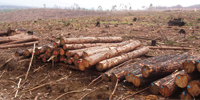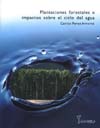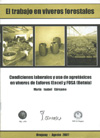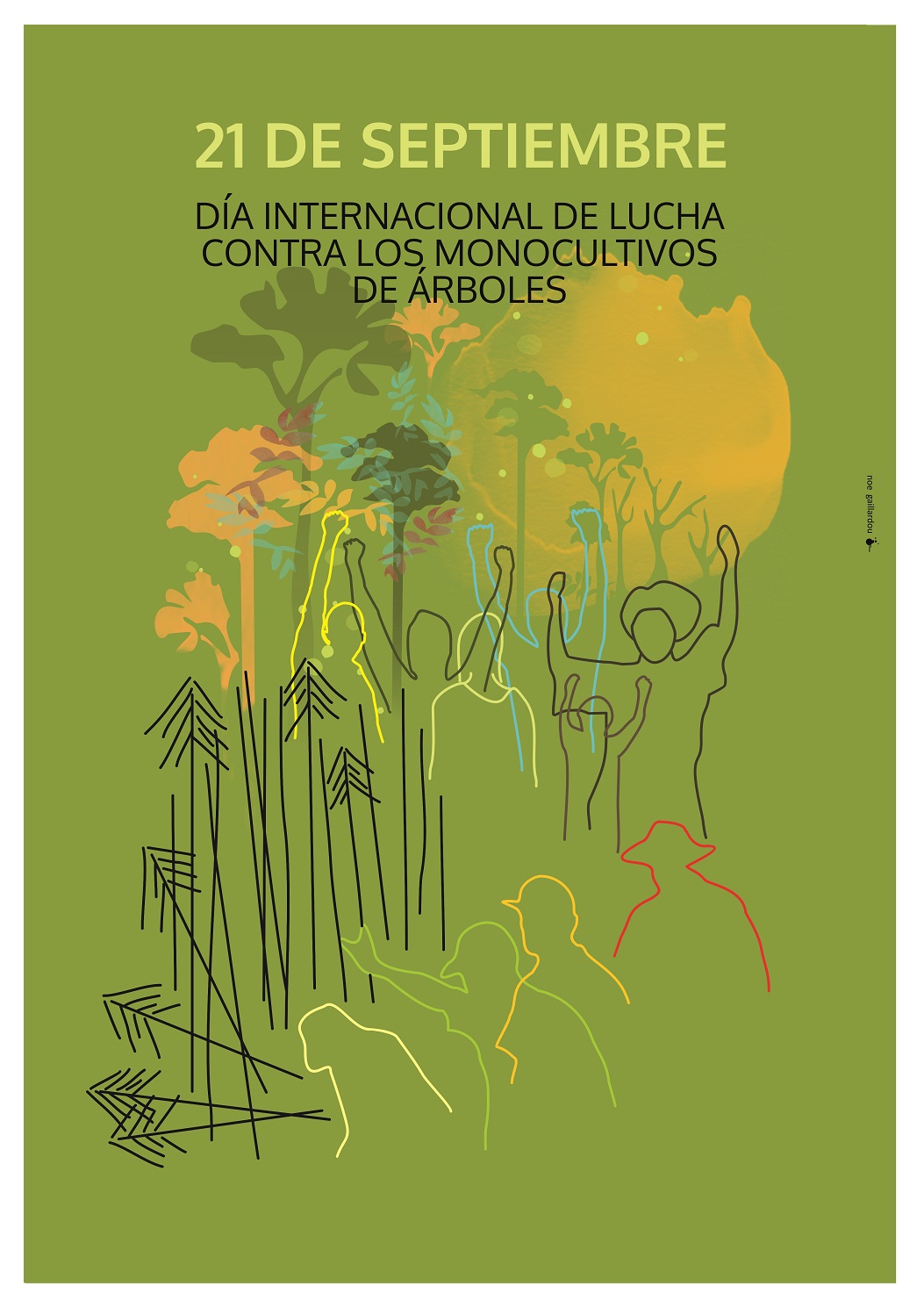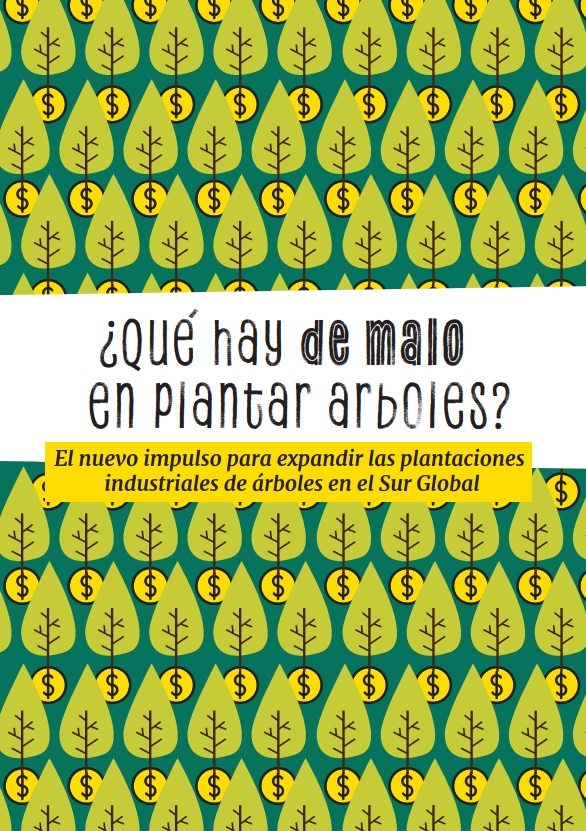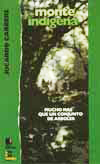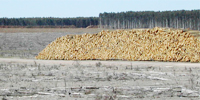In 2017, the Finnish company UPM signed a contract with the Uruguayan government to establish a third mega pulp mill. The project is subject to exorbitant conditions imposed by the multinational.
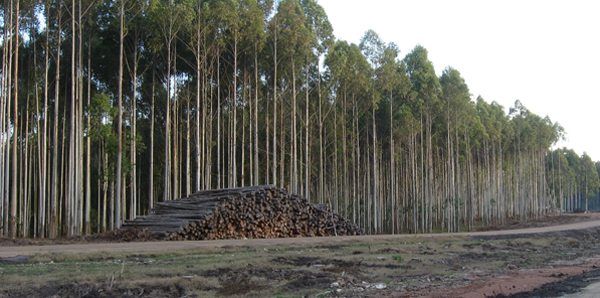
With barely 17 million hectares of land and a population of just over three million, Uruguay is now home to two mega pulp mills. The mill run by Finnish company UPM (ex-Botnia) has an annual production of 1.3 million tons, and is located on the Uruguay River. The other, Montes del Plata, was set up by a consortium of the Swedish-Finnish company Stora-Enso and Chile’s Arauco on the banks of Río de la Plata and produces 1.4 million tons per annum.
Work is now underway on a third such mill. In 2017, UPM signed a contract with the Uruguayan government to set up its second plant in the country. However, the final agreement for the project was subject to exorbitant conditions imposed by the multinational, all of which were accepted by the government.
This is nothing new. The Uruguayan government granted all of the concessions demanded by the aforementioned companies for the first two mills, including locations in a customs-free zone, tax exemption, customized investment protection agreements, and the signing of “secret” accords between the government and the companies. All of this took place in total secrecy, and civil society was only informed of the agreements once they had been signed.
The company imposes, the government disposes
In 2016, rumors began to circulate about a third mega pulp mill. It was to be installed in the center of the country and on another key source of fresh water, the Negro River, and with an investment of USD 4 billion. The factory would be located about 300 km. from the country’s capital, Montevideo. And thus the story was repeated. The government acted in total secrecy, completely excluding any form of civil society participation and initiating negotiations with the Finnish UPM for the installation of its second mega pulp mill (UPM2) in Uruguay. (1)
Towards the end of 2017, the government signed a contract with the company, guaranteeing that UPM would have the necessary conditions to make its investment. The new factory would have an annual production capacity of up to 2.4 million tons of pulp. According to the contract, the government agreed to provide road and rail infrastructure to connect the pulp mill to the capital, as well as to provide installations in the port of Montevideo for the exclusive use of UPM. With a cost exceeding USD 1 billion, these works have been set as a precondition for the company to build its plant in Uruguay. Only after the government has made “considerable progress” towards its investment commitments will the company confirm whether or not to install its UPM2 factory. (2)
Secret negotiations and false promises
Once more with the conviction that a third pulp mill will represent the country’s “salvation,” the Uruguayan government has caved in to the pressure exerted by UPM. When the secret contract was finally made public, it soon became clear how nonsensical had been the negotiations.
Both the company and the government issued false promises to try to “tone down” the scandal of UPM’s demands. And it’s the same story as before, with identical promises to those made with respect to the two previous pulp mills: thousands and thousands of jobs, an increase in GDP, and development, development and more development.
In March 2018, the “Environmental Feasibility of Location” document was published. This is one of the steps taken prior to the presentation of an Environmental Impact Assessment. The document has provided the public access to more information about the proposed enterprise. (3)
Investment: According to a recent article published by MOVUS (Movement for a Sustainable Uruguay), the investment that the company promises to make if the government of Uruguay fulfills its part of the bargain would not be USD 4 billion as initially announced, but rather closer to USD 2.5 billion. However, the investment of the Uruguayan government would be around USD 1.85 billion, instead of the 1 billion dollars initially stated. (4)
Plantations: One of the main complaints from civil society groups about the installation of pulp mills is the subsequent expansion of monoculture plantations. Despite the hundreds of thousands of hectares of eucalyptus plantations that already exist in the country, the mills will always need more plantations and located within a close radius. Although the government has stated that it would not be necessary to increase the area of plantations, recently released documents show that if this project is completed, the area covered by eucalyptus monocultures will increase by almost 90 thousand hectares in the project’s zone of impact.
Employment: In the short term, promises of thousands of jobs during the construction phase of UPM2 might appear highly alluring. But after the first three years, and following the plant’s start-up, only around 500 jobs will be generated in the entire industrial complex, according to the company’s own data.
Income for the country: Given that its mill will be located in custom’s free zone, the company will not pay any type of tax. The cost for the company to use the zone will be around USD 2.1 million per annum. However, compared to the more than USD 1.8 billion invested by the Uruguayan government in infrastructure and other subsidies, such a return is derisory.
Water: According to UPM, the company will contribute to improving the quality of the waters of the Negro River. The reality is that the mill will extract 125 million liters of river water each day, returning approximately 106.5 million liters of “treated effluents”, according to the company. The factory’s demand for water is equivalent to that of a city of 960 thousand inhabitants! (4) The waters of the Negro River are already saturated with substances such as phosphorus and nitrogen. No matter how many assurances are offered by the company that its effluents will contain levels of these and other chemicals below permitted levels, it will still be contributing to and worsening the existing eutrophication of the river (and an excessive increase of toxic algae).
Lessons that haven’t been learnt
Today, Uruguay has more than one million hectares covered by monocultures of eucalyptus and pine trees, mostly belonging to a handful of transnational companies. UPM and Stora-Enso / Arauco own almost half a million hectares between them.
Industrial tree plantations, along with sojization, have contributed to an unprecedented transformation of the countryside: the prairies (Uruguay’s main ecosystem) have been replaced by green deserts of soybeans and exotic trees. Land tenure has varied significantly, becoming highly concentrated in the hands of a few transnational corporations, while the exodus of the rural population has accelerated. According to the last census, less than 5% of the country’s inhabitants now live in rural areas. The price of land multiplied 10 times between 2000 and 2014.
As time passes, promises of employment and development have proven to be false. Compared to the huge profits made by the companies, the local population only receives the measly hand-outs provided by “corporate social responsibility” programmes. While the department of Río Negro, where the first UPM factory was built, beginning operations in 2007, also has the highest unemployment rate in the country.
Despite the obvious and reported impacts, companies try to make their activities green by “preserving” some “islands” of native flora and fauna. To achieve this, they invest in conservation technicians and NGOs. However, outside these “islands of conservation,” hundreds of thousands of hectares of countryside have been destroyed with the establishment of monocultures of trees over several continuous cutting cycles of 7 or 8 years each. Ample evidence can be found throughout the country of the negative impacts that industrial plantations have generated: decrease or total loss of water from streams and wells; negative impacts on native fauna and flora; the rupture of social and family life in rural areas, to name just a few.
However, the Uruguayan government continues to bind the country to new pulp megaprojects without discussing the industrial model of large-scale monocultures that these entail, nor the consequences for local populations and the country in general.
Such megaprojects promote inequalities, inequities and dependence on foreign capital. This consolidates an enclave economy in yet another country in the global South that supplies raw materials to industrialized nations, while the local population has to shoulder the environmental costs and part of the project’s economic investment. Is this the country we really want?
Lizzie Díaz, lizzie [at] wrm.org.uy y Teresa Pérez, teresap [at] wrm.org.uy
Members of the international secretariat of WRM and Guayubira Group.
Source: WRM’s Bulletin Nº 237 – April 2018
(1) “What’s the benefit to Uruguay of a third mega pulp mill?”
(2) Contract between Uruguay and UPM
(3) Environmental Feasibility of Location of UPM2
(4) “The unsustainable lightness of the UPM 2 pulp mill.”


